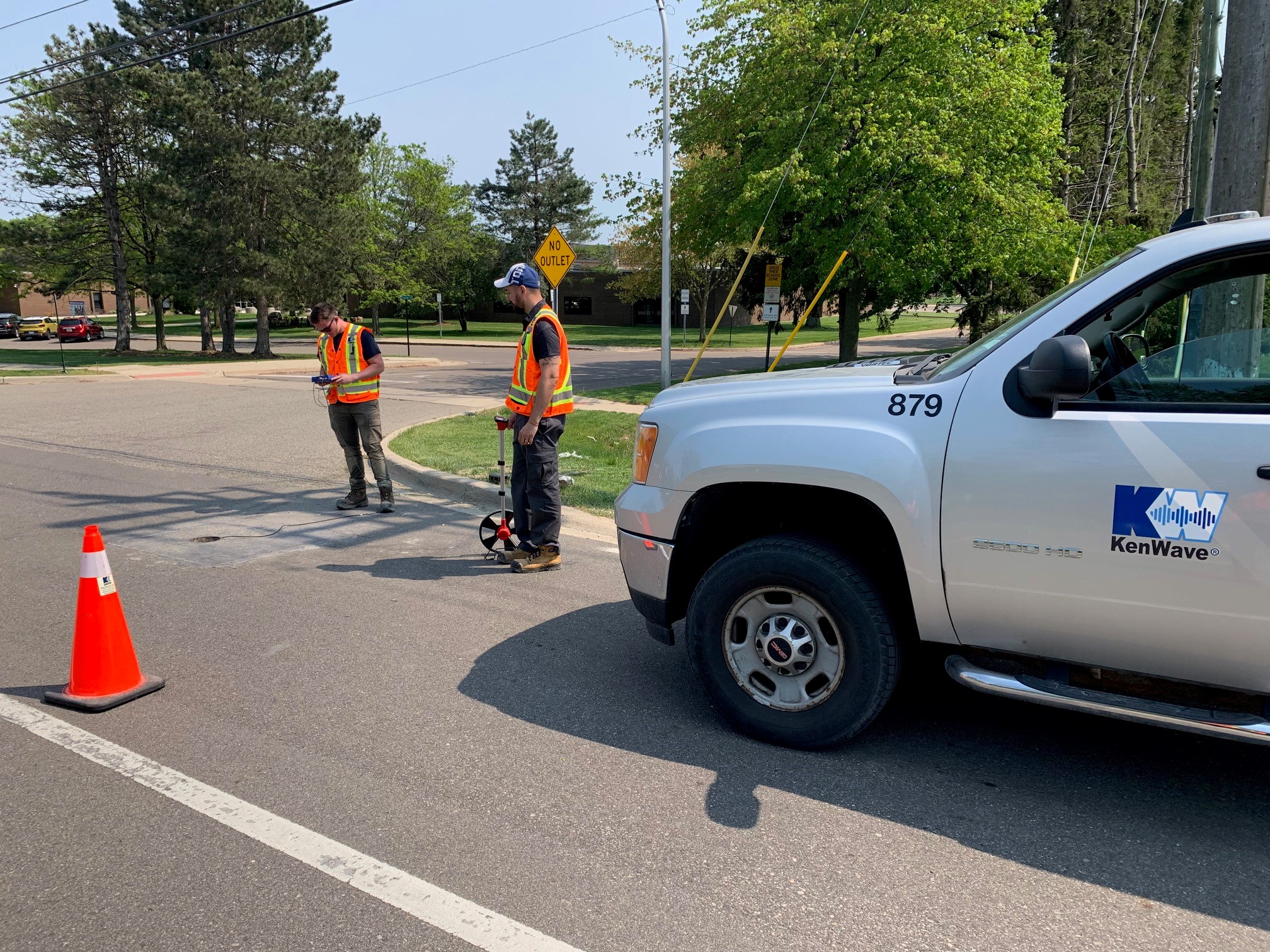With support from the Ontario Water Consortium’s Water Industry Growth Program, KenWave Solutions is transforming infrastructure management with its cutting-edge Dynamic Response Imaging™ (DRI™) technology.
Around the world, the infrastructure that delivers municipal water is ageing. The pipeline walls are thinning and cracking. They’re losing stiffness and developing air pockets. That creates the risk of leaks, wasting precious water and all the money spent to treat it. Or worse, it can cause catastrophic bursts that shut down roads, cut off service to thousands of residents and require costly repairs.
Replacing worn out water mains before they start to fail is a smart investment, according to Sebastien Perrier, senior director of technology for KenWave Solutions. “You’re actually going to save in the long run,” he says. The key is identifying which ones need replacing. But how do you determine the condition of infrastructure that’s buried underground?
Currently, asset managers have two choices. They can take a section of water main offline, empty the water and examine the interior with robotic tools — an expensive and disruptive proposition. Or they can use acoustic or pressure-monitoring technology that provides an overall assessment of the entire pipeline but can’t pinpoint where the problems lie.
KenWave’s Dynamic Response Imaging™ (DRI™) offers a better solution.
Ask the Pipe the right questions!
DRI takes advantage of the fact that different structures respond to different vibrations in characteristic ways. As those structures age and deteriorate, their response changes.
KenWave’s approach begins with applying a wave generator either directly onto the pipe or onto something that touches it, such as a fire hydrant or valve. The generator transmits vibratory signals at a selection of different frequencies, chosen based on factors like the material and diameter of the pipe.
Those signals elicit responses that can be picked up by downstream sensors, which then transmit the readings to the cloud.
Back at their Ontario office, KenWave’s experts use proprietary algorithms to analyze the multiple layers of data, providing a detailed picture of the remaining life of the assets and locating any areas that need attention.
Perrier compares the process to photography. Producing a good photograph requires the right light, a good camera and the eyes of a skilled photographer. KenWave produces accurate condition assessments using the right vibration and frequencies, well-designed sensors and data acquisition systems, and the analytic power of their algorithms.
Providing better intel
The results help owners, operators and managers better understand the current condition of critical water distribution assets, so they can make informed decisions on operations management, risk management and budget planning.
It’s something Perrier sees big demand for. “The buried assets market has been waiting for a technology like this,” he says.
He ticks off all the benefits. DRI’s approach is non-invasive and non-destructive. There’s no need to disrupt service and no risk of damage. Assessments can be performed by a single operator, covering kilometres of pipeline in a single go.
And because DRI™ can identify thinning walls, air pockets and other issues with a resolution of 2–6 metres, assets managers can make very targeted repairs, rather than ripping up and replacing long stretches of pipeline.
Initial feedback from clients has been extremely positive. “I’m not claiming we have the silver bullet,” Perrier says. “[But] we have an amazing technology that has a lot of value, a lot of advantages compared to other technologies.”
An ambitious product pipeline
KenWave Solutions was formed in 2020, ultimately becoming a subsidiary of Japanese giant Obayashi Corporation and Kenaidan, a Canadian construction leader. Until now, the company focussed on providing condition assessments and leak-detection services.
Now, they’re shifting business models. Their vision is to create a user-friendly version of the DRI™ technology they can lease to partners around the world. Those partners will collect the data and upload it to an online platform, while KenWave will continue to provide the data analysis.
To make that possible, KenWave turned to OWC’s Water Industry Growth (WIG) program. WIG funding allowed them to team up with an engineering company to turn their prototype into a marketable product. It enabled them to set up a trial rig to test and refine the technology. And it funded the architecture of the cloud-based data platform.
Thanks to that support, KenWave expects their system to hit the market by the end of 2024. “It accelerated tremendously our product-and-development roadmap,” Perrier says.
Between now and then, they’ll continue refining and validating the technology through pilots with clients. They’ll bring on new partners, adding to the half dozen they’ve already trained in Quebec, the U.S., the U.K. and Australia. And they’ll focus on spreading the word about their vibroacoustic solution to raise their visibility as a new name in the industry.
It’s a lot of moving pieces to manage. But Perrier sees big things on KenWave’s horizon, including doubling the size the company’s 12-person team by the beginning of 2024. “This is an extremely exciting time for us.”
WIG supports industry innovations that accelerate growth, create jobs and strengthen Ontario’s water sector. For more information, click here.


